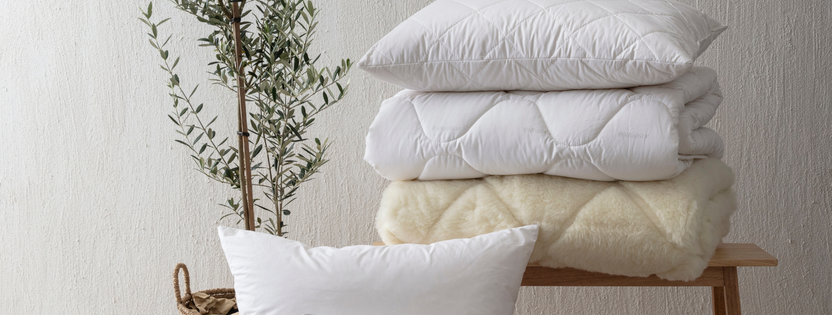What is the Best Bedding Material for Your Skin?
26th Oct 2023
In the search for perfect bedding, one primary concern stands out: skin health. The type of bedding material you choose can significantly impact the quality of your sleep, your skin's health, and overall comfort. Let's explore the various options and understand why some materials, like wool, might be superior for skin health.
Wool Bedding: A Natural Skin-Friendly Choice
Benefits of Wool Bedding for Skin Health
- Natural Moisture Wicking: Wool has an innate ability to wick away moisture. This helps in preventing the build-up of dampness or sweat, making it less likely for skin irritations or acne breakouts to occur.
- Temperature Regulation: Wool is known for its insulating properties. Whether it's summer or winter, wool bedding relieves chronic illness pains by maintaining a steady temperature, ensuring you don’t overheat or feel too cold.
- Hypoallergenic Qualities: For those suffering from allergies, wool is a godsend. Dust mites, which are common causes of allergies and skin irritations, find it hard to thrive in wool. This means wool pillows relieve allergies more effectively than many other materials .
- Soft and Gentle: Skin irritations often arise from rough or synthetic materials. Wool, being natural and soft, is gentle on the skin, reducing the chances of rashes or discomfort.
Wool vs Other Bedding Materials
While there are many bedding materials available in the market, not all are created equal when it comes to skin benefits.
- Wool vs Down: While down pillows are popular for their softness, they can trap heat and might not be suitable for those with allergies. On the other hand, wool pillows are better than down pillows as they regulate temperature better and are hypoallergenic.
- Wool vs Cotton: Cotton is breathable and soft, but it might not offer the same level of temperature regulation as wool. Moreover, cotton can retain moisture, potentially leading to skin issues in humid climates.
- Wool vs Synthetics: Synthetic materials often contain chemicals and can irritate sensitive skin. Wool is natural, chemical-free, and doesn't cause the same level of irritation.
Eczema, Allergies, and the Magic of Wool
For those battling skin conditions like eczema, the right bedding material can make a huge difference. Eczema flares up due to irritants, heat, and sweat. Wool's ability to wick away moisture and regulate temperature ensures the skin remains cool and dry. It's no surprise that wool bedding products help in relieving eczema symptoms .
Similarly, allergies caused due to dust mites or the chemicals in synthetic bedding can be alleviated with natural, hypoallergenic wool bedding. The benefits are profound, especially when considering the discomfort and sleep interruptions that allergies can cause.
Tips for Choosing Wool Bedding for Healthy Skin
- Check for Certifications: Always opt for wool bedding that comes with certifications, ensuring it's free from harmful chemicals and is sourced sustainably.
- Choose the Right Wool Type: Merino wool, for instance, is known for its ultra-fine and soft texture, making it perfect for bedding.
- Maintenance is Key: To keep your wool bedding in top condition, follow care instructions diligently. This ensures longevity and maintains its skin-friendly properties.
_____
Choosing the right bedding material goes beyond aesthetics and comfort; it's about ensuring the best for your skin and health. With its plethora of benefits, wool emerges as a top contender in the quest for skin-friendly bedding. When you prioritise your skin's health, you're paving the way for better sleep, reduced irritations, and an overall sense of well-being. So, the next time you're on the lookout for bedding, remember to consider the wonders of wool.

